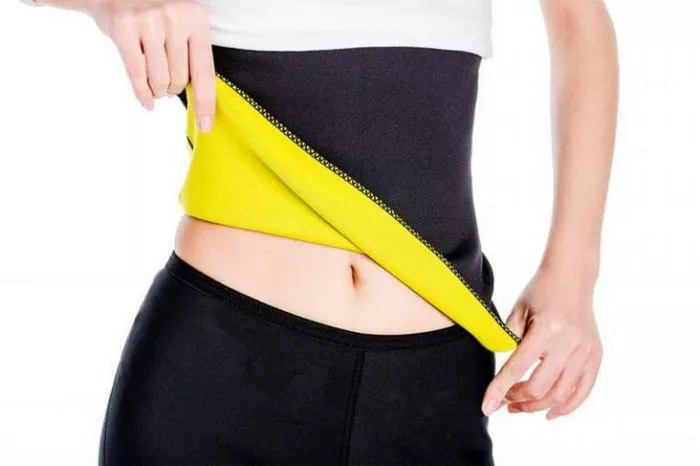Have you ever heard of the plastic wrap method for reducing belly fat? It’s a trendy technique that involves wrapping plastic wrap around your midsection to supposedly slim down your waistline. But does it actually work, or is it just another fitness fad?
In this article, we’ll delve into the truth of plastic wrap for belly fat and explore whether it’s an effective strategy for achieving a flatter stomach.
Understanding the Plastic Wrap Method:
The plastic wrap method, also known as “plastic wrap therapy” or “body wrapping,” involves wrapping the abdominal area with plastic wrap or a similar material and leaving it on for an extended period, typically overnight.
Proponents of this technique claim that it can help reduce belly fat by increasing sweat production, promoting detoxification, and tightening the skin. However, there’s limited scientific evidence to support these claims.
The Theory Behind Plastic Wrap for Belly Fat:
The idea behind the plastic wrap method is based on the concept of “spot reduction,” which suggests that you can target specific areas of the body for fat loss through localized treatments. However, research has shown that spot reduction is a myth, as the body tends to lose fat in a systemic manner rather than from specific areas.
Therefore, wrapping plastic wrap around your belly is unlikely to result in significant fat loss in that area alone.
The Reality of Sweat and Water Weight Loss:
While wrapping plastic wrap around your midsection may indeed cause you to sweat more, the weight loss associated with this sweating is primarily water weight rather than fat loss. As soon as you rehydrate, the lost water weight will likely return. Additionally, excessive sweating can lead to dehydration and electrolyte imbalances, which can have negative health consequences.
Potential Risks and Side Effects:
Aside from the temporary water weight loss, there are potential risks and side effects associated with using plastic wrap for belly fat reduction.
Prolonged compression of the abdominal area can restrict breathing and circulation, leading to discomfort, skin irritation, and even nerve damage.
Moreover, the chemicals found in some types of plastic wrap may be absorbed through the skin and pose health risks.
The Importance of a Balanced Approach:
When it comes to reducing belly fat and achieving a flatter stomach, there’s no magic bullet or quick fix. Instead, it’s essential to adopt a holistic approach that combines healthy eating habits, regular physical activity, and lifestyle modifications.
Incorporating a balanced diet rich in fruits, vegetables, lean proteins, and whole grains, along with staying hydrated and getting adequate sleep, can promote overall health and well-being.
Exercise for Belly Fat Reduction:
Regular exercise is a key component of any effective belly fat reduction strategy. While spot reduction may be a myth, engaging in cardiovascular exercises such as running, cycling, or swimming can help burn calories and promote overall fat loss.
Strength training exercises that target the core muscles, such as planks, crunches, and Russian twists, can also help tone and strengthen the abdominal area.
The Role of Body Composition:
It’s essential to recognize that belly fat accumulation is influenced by various factors, including genetics, hormones, and lifestyle habits. Some individuals may naturally carry more fat around their midsection due to their body composition, while others may store fat in different areas of the body.
Therefore, focusing solely on reducing belly fat may not be realistic or achievable for everyone.
The Importance of Realistic Expectations:
In today’s society, we’re bombarded with unrealistic beauty standards and quick-fix solutions for achieving the “perfect” body. However, it’s crucial to set realistic expectations and focus on overall health and well-being rather than striving for an unattainable ideal. Embrace your body’s unique shape and celebrate what it can do rather than obsessing over its appearance.
Alternative Methods for Belly Fat Reduction:
If you’re looking for alternative methods for reducing belly fat that are safer and more effective than the plastic wrap method, consider the following approaches:
1. Healthy Eating Habits:
Focus on eating a balanced diet rich in whole, unprocessed foods and limiting your intake of sugary beverages, refined grains, and processed snacks.
2. Regular Exercise:
Incorporate both cardiovascular and strength training exercises into your routine to burn calories, build muscle, and improve overall body composition.
3. Stress Management:
Practice stress-reducing techniques such as deep breathing, meditation, or yoga to lower cortisol levels and prevent stress-induced weight gain.
4. Adequate Sleep:
Aim for seven to nine hours of quality sleep each night to support hormone regulation, appetite control, and overall well-being.
Conclusion:
In conclusion, the plastic wrap method for belly fat reduction is a questionable technique that lacks scientific evidence and may pose potential risks and side effects. While sweating excessively may lead to temporary water weight loss, it’s unlikely to result in significant fat loss in the abdominal area. Instead of relying on quick fixes or gimmicks, focus on adopting healthy eating habits, staying active, and embracing a balanced approach to wellness. Remember, achieving a flatter stomach takes time, patience, and dedication, but the results are well worth the effort.
Related Topics:
Best Ab Exercises for Side Fat
The Best Exercise for Fat Around Waist
Which Is Best for Weight Loss: Diet or Exercise?


